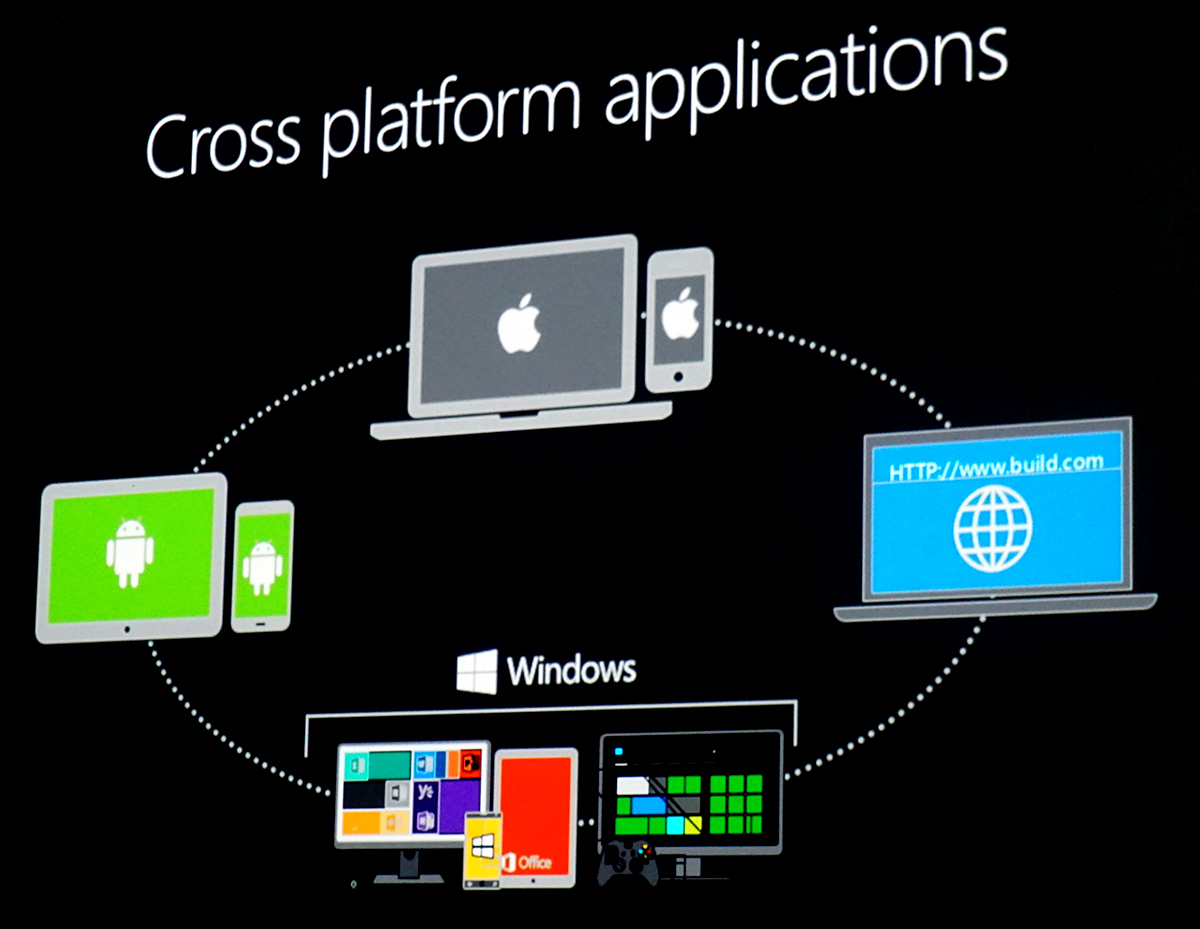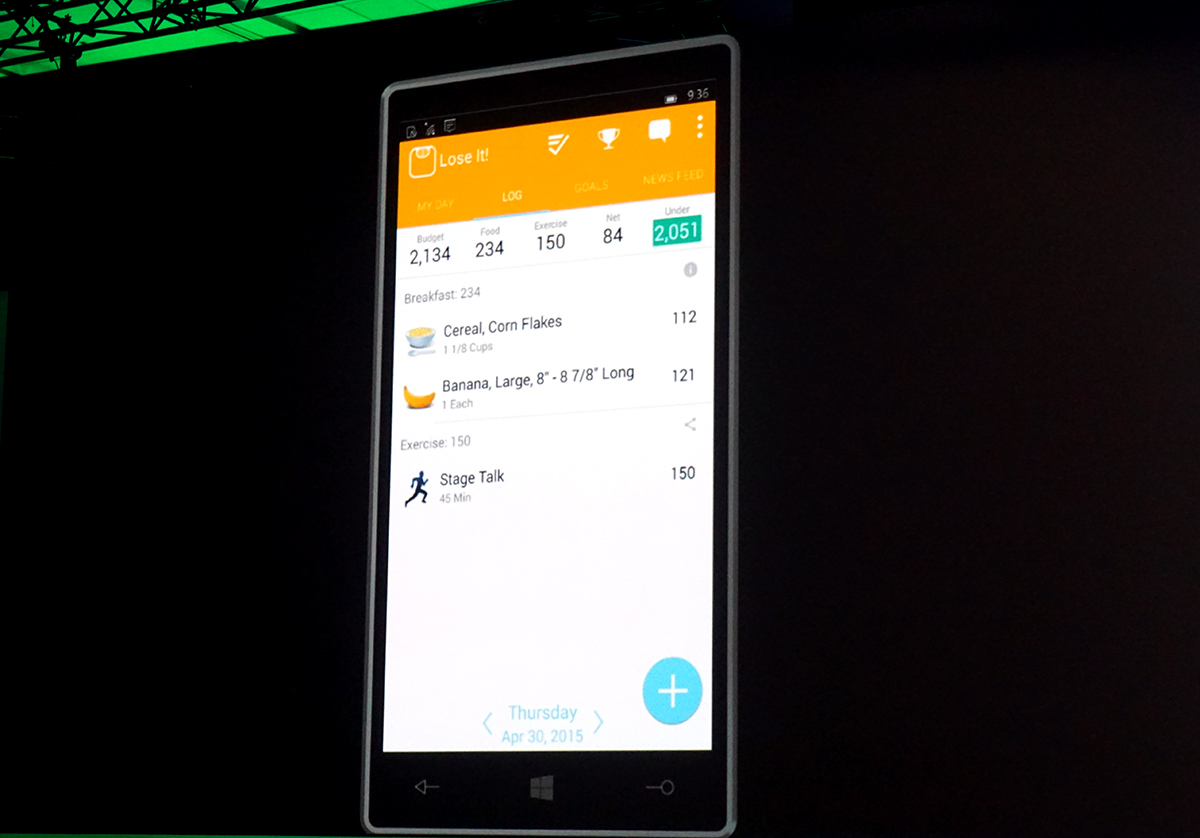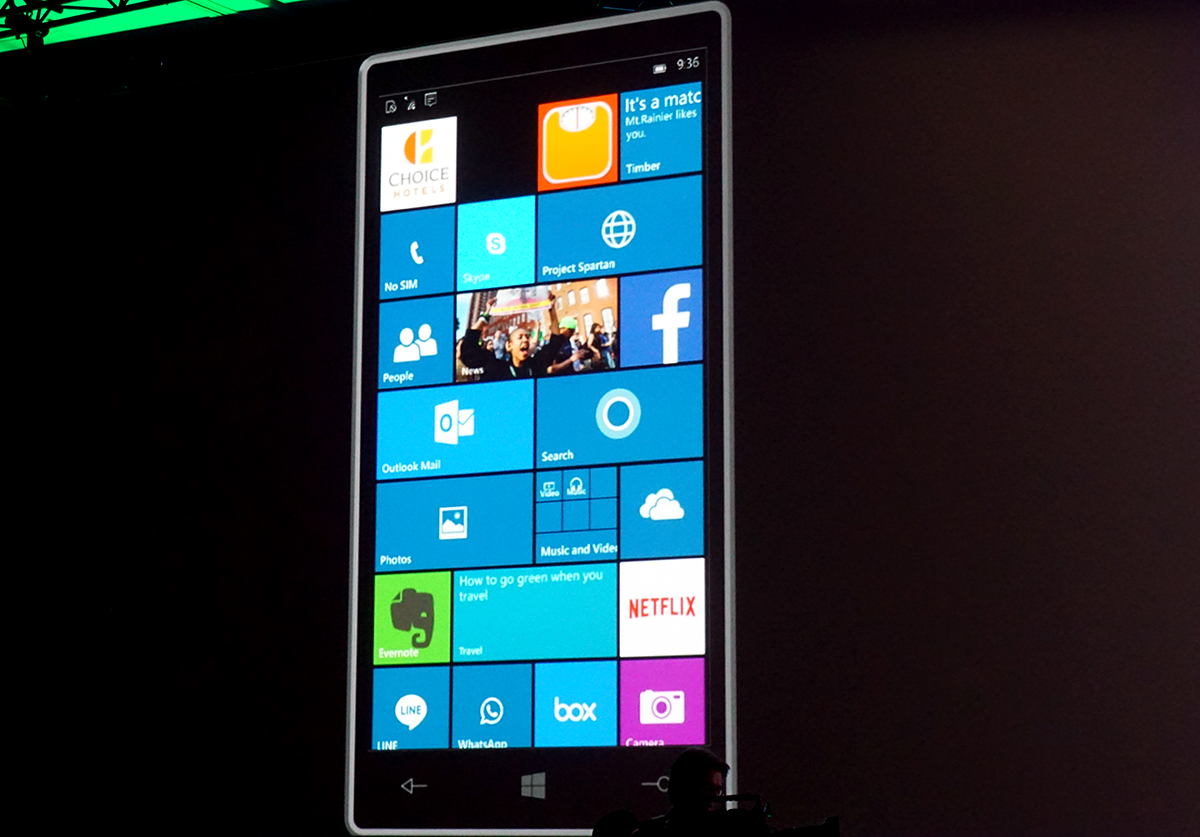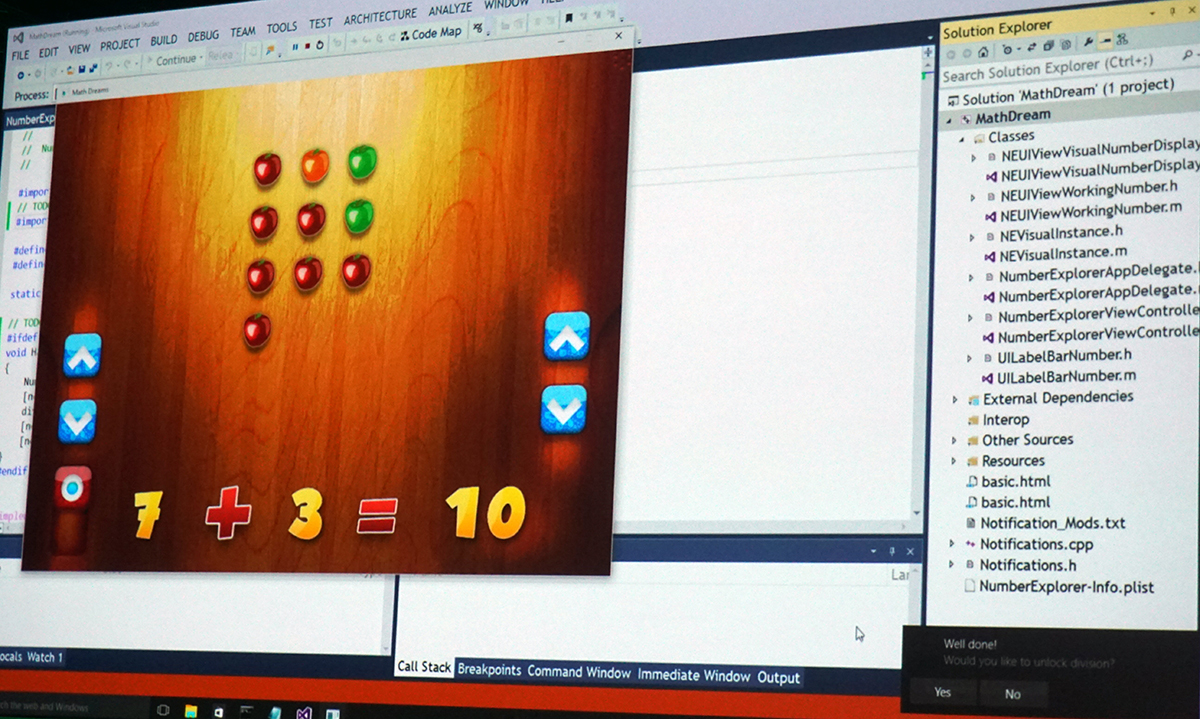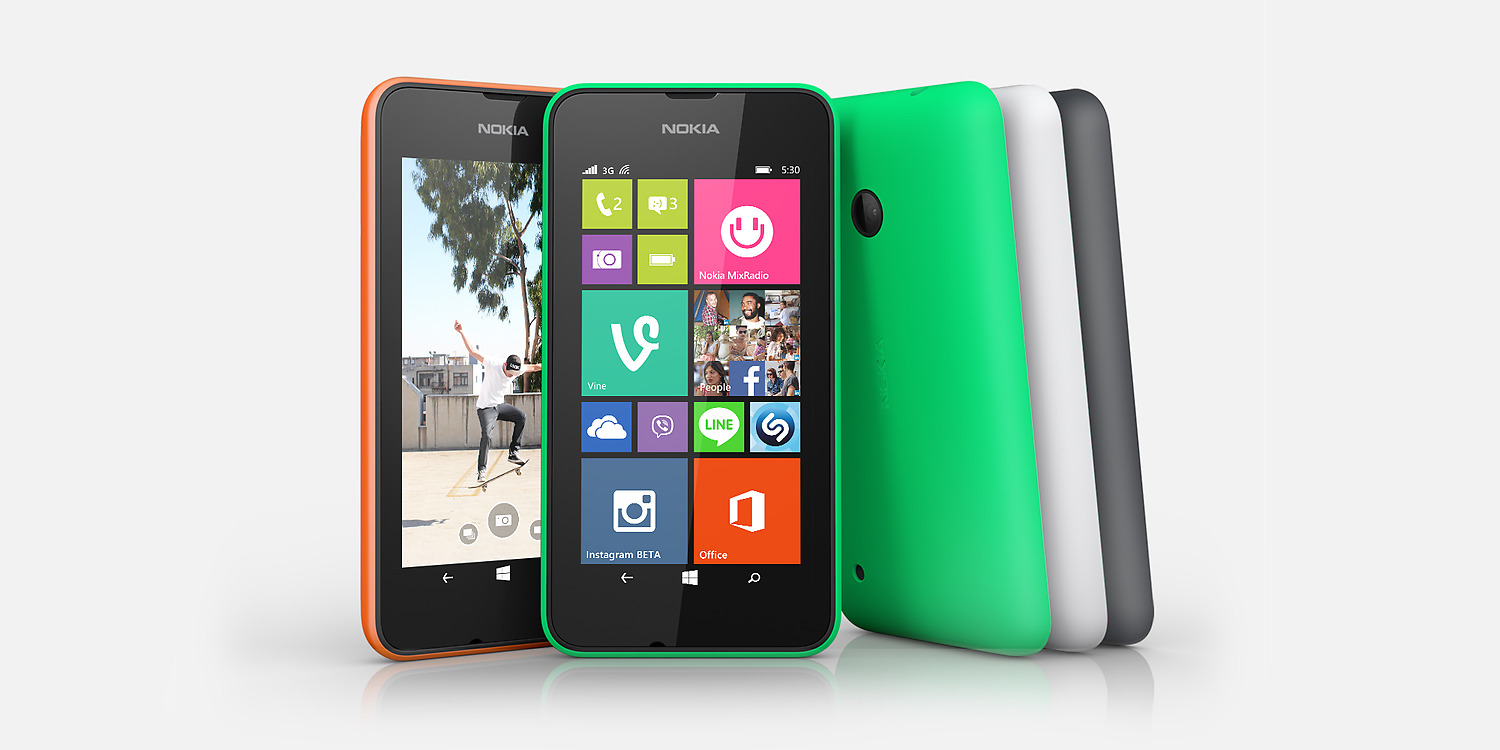Microsoft's Plan To Save Windows Phone: Android And iOS Apps
Microsoft revealed more about its Android-and-iOS-on-Windows Phone plans. Dubbed "Project Astoria" (Android) and "Project Islandwood" (iOS), these programs represent a large part of Microsoft's mighty effort to rescue Windows Phone from irrelevancy.
Simply put, Project Astoria (aka "Project A") and Project Islandwood will allow developers to create Windows apps using Android code and Apple's Objective-C code, respectively. This is made possible by Microsoft's Universal Windows Platform Bridge toolkit.
For Project Astoria, Microsoft promised:
Build Windows apps for phones with few code changesUse a Microsoft interoperability library to integrate Microsoft services into your app with very little effortTest and debug your app from your preferred IDEPublish your app and get paid through the Windows Store
For Project Islandwood, Microsoft promised:
Import Xcode projects into Visual StudioMake minimal changes to your iOS/Objective-C code to build a Windows appBuild and debug your Objective-C code from Visual StudioTake advantage of great Windows servicesExtend your app to take advantage of Universal Windows Platform features
On stage at Build 2015, Microsoft's Kevin Treadwell elaborated on Project A and Project Islandwood and gave us some demos.
Get Tom's Hardware's best news and in-depth reviews, straight to your inbox.
On the Android side, devs can reuse their Java and C++ code and tweak it to take advantage of Windows 10 features such as Live Tiles, and they can distribute their wares in the Windows Store.
We saw earlier how the code can be easily extended to tap into Windows 10's keyboard, touch and navigation UI, design and capabilities, but there are more advanced features available as well.
Using the Android fitness app Lose It!, Treadwell showed how, in the Windows 10 port, he was able to share his fitness data with a friend--using Windows 10's messaging.
In another demo using the app Timber, he showed how the port behaved like any other Live Tile (complete with flippy animation). When he mapped out a journey on Timber, the app tapped into Bing Maps instead of Google Maps.
In the iOS demo, we actually saw how a dev could convert its code to run on Windows 10. Treadwell pulled up the files and data for an iOS app (Math Dreams) and opened them in Microsoft's Visual Studio.
He simply hit F5 to build and run the app, and that was it. Math Dreams, which is to be fair a very simple app, ran smoothly on Windows 10. He did, however, want to add an additional feature in the form of notification support. He opened two pre-written files, quickly tweaked the source code of Math Dreams, and rebuilt it with the changes implemented. He re-ran Math Dreams, performed an operation, and got a notification in Windows 10.
Project Islandwood gives iOS devs full access to Windows 10 API sets (such as, for example, Cortana), and they can integrate C++ code into a project and deploy the finished app in the Windows Store.
Both Project A and Project Islandwood will be available to devs after the launch of Windows 10, which is widely expected to occur at the end of July. Developers can sign up for Project Astoria here, and Project Islandwood here.
Microsoft Takes Aim
On its face, the ability to easily port Android and iOS apps to Windows 10 on phones is a huge deal for Microsoft, a significant opportunity for app developers, and an intriguing potentiality for end users. (On the other hand, there's some concern about how smoothly these ports might work in real life. Will the apps all run smoothly and maintain their carefully-crafted visuals, layout and so on? If not, devs will be far too gun shy to port their creations; providing a mediocre user experience is not good for business.)
However, make no mistake that this is a large part of Microsoft's attempt to entice users to Windows Phone. It's no secret that Windows Phone is not a popular platform in the U.S.; its market share is effectively a rounding error compared to Android and iOS. The company needed to do something drastic. And it has.
Topping Vertical Markets, And Rebuilding One
Microsoft is trying to turn the vertical integration paradigm espoused by Android and held in a vise grip by iOS on its head. You want iOS apps, Android apps, and our purpose-built Universal Apps? You can have them all right here, on your Windows Phone device. In one cunning move, that turns Microsoft's greatest weakness in the mobile market into its greatest strength.
The company has seen little success going with the (now traditional) mobile OS-app store tie-in, so instead of trying to beat Apple and Google at their own game, Microsoft changed the rules. Effectively, Microsoft has taken three vertical markets and created one big horizontal one.
Assuming this all works out smoothly, it could be a veritable coup for Redmond. It's also worth noting that horizontal integration is exactly what Microsoft is all about now--one platform on all devices. It wants all devices to enjoy the same essential Windows experience with Windows 10.
If it can suck in many of the apps populating the world's two largest mobile app stores in the process, all the better.
However, Microsoft's horizontal strategy is actually just a different sort of vertical one. Ironically, like Apple and Google, Microsoft is also trying to get consumers to buy into its platform and stay there. The Windows 10 experience is only superb if you rely on all of Microsoft's products and services.
For example, you'll want to be friends with Cortana on your phone and desktop. Your photos and docs will all end up in OneDrive (and you can browse your files stored in OneDrive from within File Explorer). Your email on your phone, on the Web, and on-device will all be wrapped up in Outlook. Project Spartan wants you to include Cortana in your browsing experience. And so on.
Developer Buy-In Is Key
Of course, this strategy will only be effective if developers buy in. Microsoft has gone to great lengths (and spent plenty of stage time at Build) assuring devs that porting these applications will be so, so, so easy.
That's crucial, because mobile app developers will only care to make anything for the Windows Phone platform if it's incredibly easy. Otherwise, the ROI just won't be there for most. (The fact that mobile apps can extend to the desktop and beyond thanks to Microsoft's Universal Windows Platform is another potentially powerful value add.)
The ports will also have to work seamlessly; otherwise, devs and users alike will quickly abandon the whole thing.
However, if Project Astoria and Project Islandwood prove to be successful, Microsoft's phone platform may have a fighting chance to reclaim some semblance of U.S. market share.
Seth Colaner is the News Director at Tom's Hardware. Follow him on Twitter@SethColaner. Follow us @tomshardware, on Facebook and on Google+.
Seth Colaner previously served as News Director at Tom's Hardware. He covered technology news, focusing on keyboards, virtual reality, and wearables.
-
chulak Reply15779087 said:If you can't beat them ... copy their libraries / code.
Maybe you read the article, but I don't think you understood it. Microsoft can't copy anybody's code and/or libraries for obvious reasons. This is about tools for developers to port their own Android/IOS apps to Windows. The dream of any developer is to have their creation be seen and used by as many people as possible. If these tools pan out, it's going to be a huge win for everybody including Microsoft. -
jimmysmitty ReplyIf you can't beat them ... copy their libraries / code.
If you add this in with Continuum then Microsoft is fixing to beat them. Imagine being able to plug your phone into an screen and carry a foldable keyboard and small mouse to connect via BT and bam. You have your desktop and you can run apps that are normally only on iOS and/or Android.
It is honestly the smartest thing Microsoft has done since NT. Sure 7 was great but NT was a true evolution to the Windows OS and this is fixing to be just as good of a change. -
BeowulfXX One of the things I like in using a Windows phone is that users are actually given the option to install apps (or move the apps) into microSD. Granted that there are a few ones that does not allow to be installed into microSD like Messenger app (which integrates itself into FB), most of the apps I have downloaded allowed the user to install into microSD. This is great considering the user gets to save precious built-in storage space and the reason why even having an 8GB-storage phone such as the recently-released Lumia 640 XL bearable/acceptable. Now imagine using an 8GB phone while using Android. Even if recent KitKat and the new Lollipop build allows the user to install on microSD, it seems a good percentage of apps still need to be installed into built-in storage of phone. This makes considering an 8GB smartphone running android a lost cause.Reply
Another good thing is that Windows phone seem to run smoothly even on lower-spec'd mobile hardware such as Snapdragon 400/1.2 GHz quad-core processors. Now compare that to the CPU hog and/or memory hog apps (and possibly even the Android OS dressed up in various UI versions per mobile manufacturer like Samsung, Huawei etc.), then suddenly a user needs to consider higher spec'd cellphones that obviously will cost more.
If the Windows App store will be populated by Android apps that refuse to be installed in microSD expansion to save remaining built-in storage of Windows phone users, that'll be a big blow to one of the plus-points/advantage of owning a smartphone running on Windows OS.
I'd rather Microsoft considering offering the Windows OS as a downloadable/installable app to Android users so that it can be installed using the current, relatively higher-spec'd phone hardware required by Android apps and android OS. Given how Windows OS is able to run smoothly on lower spec'd, it will be quite a blast to install and use Windows OS on existing more powerful quadcore iterations seen in current and upcoming Android devices/phones. -
Grandmastersexsay Maybe if Microsoft designed a windows phone that wasn't more locked down than an iphone, they might have had a seller. The windows phone business model looks like something out of blackberry's playbook.Reply -
Ben Liu Do what Blackberry did - just get a JVM / Dalvik running on it in real time. M$ can purchase already existing ones out there to speed it up.Reply -
falchard It really depends on implementation and traction. Even though it has always been easier to develop on Windows Phone, developers still preferred not to develop for it. Now this appears to be a 10 minute process in porting an application, but developers still might be apathetic to it. I know it seems dumb to limit your market including a higher percent in Europe because you don't want to spend 10 minutes porting it. But there are devs that this would not even occur to them.Reply
The other issue is how these will translate. There are 2 issues. 1st is that both android apps and iOS apps are horribly optimized, but Windows Phone tends to auto-optimize making them perform better. If they manage to keep the optimization of Windows Phone, that will be good. The other issue is that the most likely response by Google and Apple will be to make some type of arbitrary code that throws errors being run through these projects required on all their apps. -
Ben Liu Reply15781024 said:The other issue is how these will translate. There are 2 issues. 1st is that both android apps and iOS apps are horribly optimized, but Windows Phone tends to auto-optimize making them perform better. If they manage to keep the optimization of Windows Phone, that will be good. The other issue is that the most likely response by Google and Apple will be to make some type of arbitrary code that throws errors being run through these projects required on all their apps.
Firstly, Android and IOS apps are not exactly horribly optimised - just not optimised in the same way as Windows being on totally different ecosystem with its own architecture and limitations. One can argue (subjectively) which ecosystem is "better" but its a pointless debate.
Secondly, SDK's API's and the lot keep changing from version to version and Microsoft in doing what they are doing will forever be playing a catch up game. Google and Apple realistically can make any changes whatsoever at all to their development environments just to throw off Microsoft in this way and they have no commitment to Microsoft for their code to work with their translation engine. -
lpedraja2002 Wow if they put the effort to make this work without many problems this might be a huge game changer for Windows Phones. Is this the vision of that new CEO? Because if it is, he's doing a damn good job leading the company.Reply -
Belardo Microsoft still grasping at straws. To a degree, when WP7 was new - it should have taken the phone market by storm with its different UI. Windows 8's failure did a lot of damage to their WP8 plans.Reply
As an app developer (Android and iOS) I doubt I will ever bother with this. Why? Its another account / store / platform to support. The market is tiny, the choice of phones are small and there is simply not much reason to bother. The mobile space wants Microsoft to die, IMHO.
If you want to run WP8 UI, you can use your typical Android phone and install Launcher 8, which is more flexible and has some really COOL features that WP8 doesn't have that Launcher has been doing since the WP7 era. You would be hard pressed to tell the difference.... and its free.
